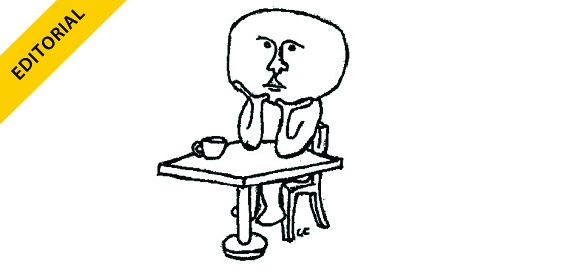This summer, I read Diarmaid MacCulloch’s massive book “Christianity: The First Three Thousand Years.” It was full of names I didn’t know and don’t remember, theological debates I didn’t really understand and many, many senseless disagreements between Christians that all too quickly boil over into madness. Much like the world today.
Centuries ago, Christians argued about the exact relationship between Jesus’ divine and human natures or the precise word choice for describing the Holy Spirit. Today, these things seem like ivory-tower questions, certainly not something that would split a church.
But what I found so amazing about MacCulloch’s immortal-bird’s-eye view of Christianity is that these disagreements did split churches, and these churches developed their own religious cultures independent of each other, for the most part. There is often contact and cross-pollination between them later, but not until they have developed their own ways of being Christian that differ a lot more than their original disagreement. This happens over and over again throughout history, at every single level: the Chalcedonian and non-Chalcedonian churches of the 400s, the Catholic and Protestant churches of the 1500s, the Reformed Church in America and the Christian Reformed Church in the 1800s.
This pattern, the fractal-like division of the church, has led to war and hate and pain, but it’s also produced variety and beauty. This variety — of worship styles, of theology, of politics — is important because it is impossible for one single group of humans to have a monopoly on truth. There’s simply too much of it.
What does this look like today, when our disagreements are so different, so much more real? What does it look like in a country where Christians are divided so completely between two allegedly Christian presidential candidates? What does it look like at a Reformed college when there are more students of other religious traditions than ever before?
One answer, of course, is that we don’t know. MacCulloch’s book is a history, and it ends gracefully in the late 20th century before the questions get current and difficult. We don’t know what horrific wars or astounding revelations are waiting for us.
All we know from history is that difference, especially religious difference, is dangerous and beautiful and inevitable. It is one of our greatest tools to bring God’s kingdom to every corner of the earth, and it’s one of our greatest threats from the inside. We can’t seek to avoid it, and we can’t avert our eyes from it. Disagreements between Christians and churches are staring us in the face all the time, and we need to return the gaze and pay attention to the danger they pose but also the opportunities they bring. We must not blink.




